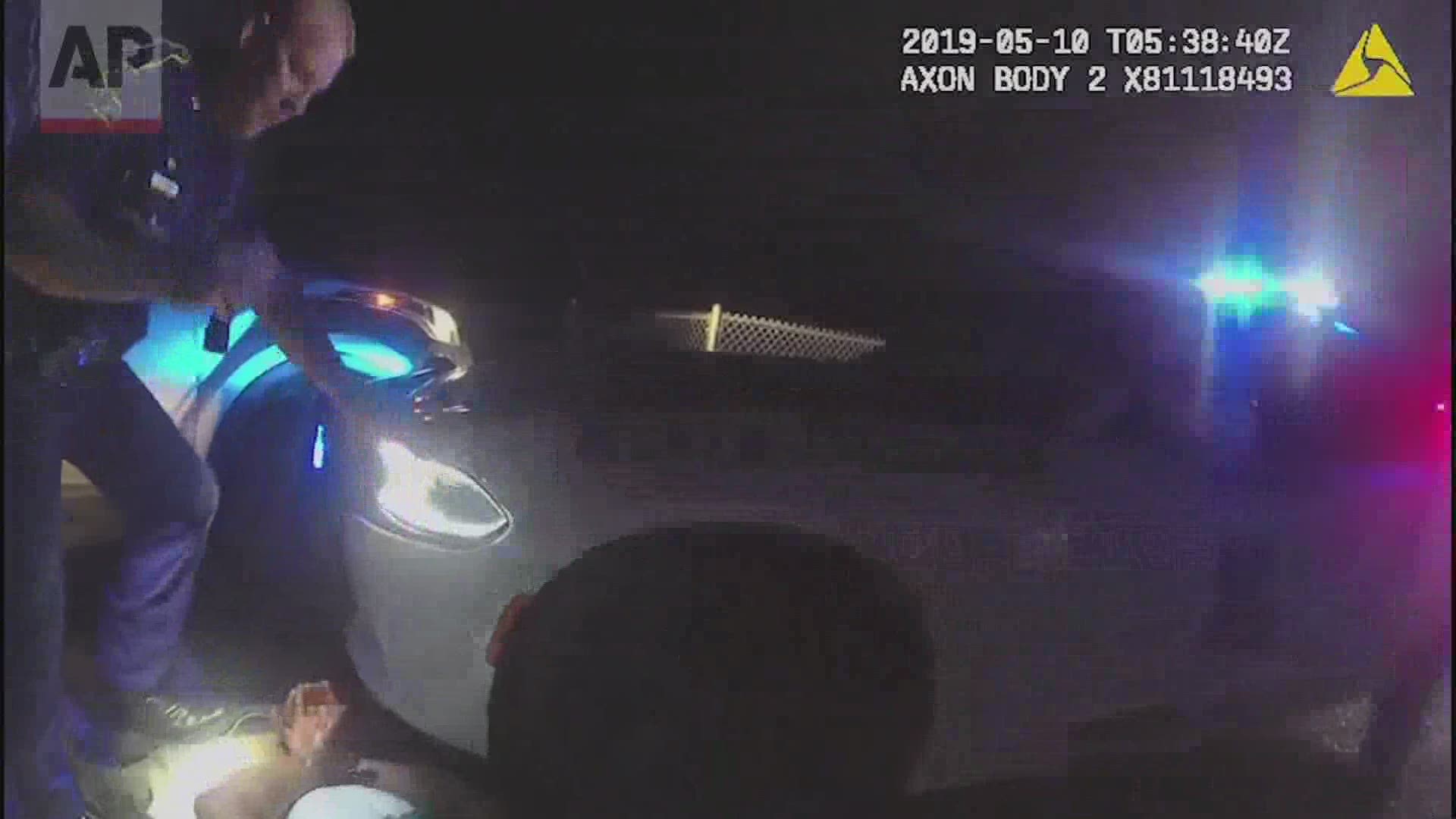NEW ORLEANS — Recently disclosed body cam video from State Police Lieutenant John Clary of Troop F in Northeast Louisiana shows motorist Ronald Greene being dragged from his car by fellow troopers, shocked with a stun gun, beaten while in handcuffs, dragged by his feet, then left face down in the dirt as his life slipped away.
But for two years, Clary denied having body camera video, until leaked video, including from Clary's bodycam, was published last month by the Associated Press.
“There was no investigation. No write-up of that. Come to find out two years later, that his body cam was on,” said Rafael Goyeneche of the Metropolitan Crime Commission, a law enforcement watchdog group.
The video, now critical evidence in federal and local investigations of the troopers, exposed that Clary's initial statements to detectives that Greene died from injuries suffered in the accident were false.
“They reviewed the body cam and discovered that what he had written in his reports were not accurate or truthful,” Goyeneche said.
Clary was not only the ranking officer at that scene, which followed a traffic stop and high-speed chase, he had by far the most experience with 31 years on the force. One of the troopers under his command during Greene's arrest was fired last week, while another died in a car crash in 2020 after learning that he was being fired. No action has been taken against Clary, State Police spokesman Nick Manale said.
WWL-TV requested Clary's employment records from the State Police on June 1, but that request has not yet been granted.
However, Channel Four’s investigation uncovered other recent claims of excessive force against Clary and other troopers that have largely flown under the radar.
The claims against Clary and other troopers are contained in several federal civil rights lawsuits from a 2016 protest march in Baton Rouge in the aftermath of the
death of Alton Sterling at the hands of Baton Rouge police officers.
Video provided in one of the lawsuits shows that the march began peacefully. Plaintiffs included professional media footage, cell phone videos and an array of photographs from participants and onlookers to support their lawsuit.
“They had riot gear, they had Bearcat vehicles, all of that kind of stuff. In response to just a peaceful protest,” said David Lanser, one of the civil rights attorneys who filed one of the suits naming Clary as a defendant. “Despite all of these cameras on them they apparently had no problem committing these unconstitutional acts on camera right in front of everybody.”
The petition filed by Lanser and William Most, New Orleans civil rights attorneys, claims that officers from several different departments used military-style tactics to surround the protesters, eventually cornering them in the yard of a woman's home.
“They got on private property, invited onto private property, and thought that would be good enough. It really raises the question, what could the protesters have done differently?” Lanser asked.
Despite being granted permission by the property owner to stand in her yard, nearly 200 protesters were arrested, records show, with about a dozen claiming injuries at the hands of officers.
Most of those officers were either Baton Rouge police or parish sheriff's deputies. But a close look at the video and photographic evidence shows that State Police Troopers also participated, and they were front and center when officers moved in to make arrests.
“You can see Louisiana State Police officers right in the middle of these arrests happening, right in the middle of the officers swarming the private property,” Lanser said.
According to the lawsuit, one of the commanding officers that day was then-Sgt. John Clary, among 11 troopers listed by name as defendants. While Clary is also a named defendant in at least two other lawsuits from the protest, the Lanser suit gives his position as a “platoon leader.”
“What we do know about his involvement is that he was part of this Mobile Field Force unit, one of the individuals coordinating this response and coordinating the tactics used against the protesters,” Lanser said.
State Police declined to comment on the lawsuit or Clary's role that day. The defendants' initial responses to the lawsuits, include a claim that the officers' actions that day were “reasonable, justified and legally permissible.”
In their complaint, however, plaintiffs stated, “In their frenzy, the officers arrested a mix of protesters, reporters, and legal observers. The arrests were extremely violent.”
One of the most highly publicized images from the arrests appeared on the front page of The Times-Picayune newspaper. Plaintiff Raae Pollard was holding a sign stating “Love” as state troopers grabbed her by the neck and arms while placing her into custody using zip-tie handcuffs. While Clary is not one of the officers arresting Pollard, attorneys are working to determine precisely what role he played.
“The Louisiana State Troopers targeted her for whatever reason and actually choked her while arresting her,” Lanser said.
All charges against the protesters for obstructing public passages were dropped, records show. Some settlements have been paid out to protesters by the Baton Rouge Metro Council on behalf of local police agencies, but records show nothing paid by the State Police.
With Clary and the State Police under scrutiny in the Greene case and others, Goyeneche said their roles in Baton Rouge should also be revisited by the feds.
“That may mean that they're taking a look at some of the same footage that you're looking at,” he said.

